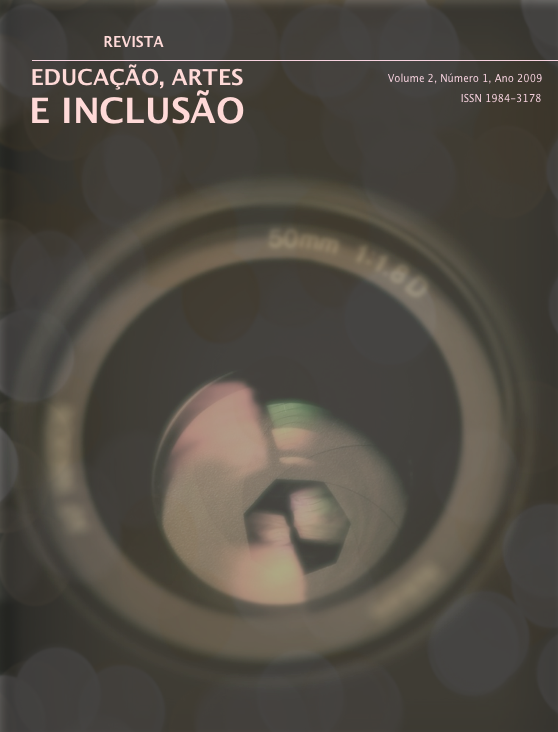OFICINA: o uso de novas tecnologias no âmbito da arte educação
Resumen
O presente relato se trata de um trabalho proposto pela professora Mara Rossatto, com o tema Arte Instalação, nas turmas de oitava série do colégio E.M.E.F. São Vitor, em Caxias do Sul (RS). A proposta feita, no início, foi que os alunos trabalhassem orientados através de uma webquest. Por meio do laboratório de informática e webquest foi trabalhada em grupos de quatro alunos, onde todos puderam interagir com esta metodologia de sistema orientado. A culminância deste trabalho foi a visita à Bienal do MERCOSUL, onde puderam vivenciar toda a pesquisa que fizeram anteriormente através da webquest. Durante todo o trabalho, pensou-se na arte contemporânea e tecnologia obtendo-se um resultado bastante significativo.Descargas
Descargas
Publicado
Cómo citar
Número
Sección
Licencia
Declaración de Derecho de Autor
Los autores que publican en esta revista concuerdan con los siguientes términos:
(A) Autores mantiene los derechos de autor y concede a la revista el derecho de primera publicación, con el trabajo simultáneamente licenciado bajo la Licencia Creative Commons Attribution que permite el compartir el trabajo con reconocimiento de la autoría y publicación inicial en esta revista.
(B) Autores tienen autorización para asumir contratos adicionales por separado, para distribución no exclusiva de la versión del trabajo publicada en esta revista (por ejemplo, publicar en repositorio institucional o como capítulo de libro), con reconocimiento de autoría y publicación inicial en esta revista.
(C) Esta revista proporciona acceso público a todo su contenido, ya que esto permite una mayor visibilidad y alcance de los artículos y reseñas publicadas. Para obtener más información acerca de este enfoque, visite el Public Knowledge Project.
Esta revista tiene una licencia Creative Commons Attribution-NonCommercial 4.0 International. Esta licencia permite que otros remezclen, modifiquen y desarrollen su trabajo con fines no comerciales, y aunque los trabajos nuevos deben acreditarlo y no pueden usarse comercialmente, los usuarios no están obligados a licenciar estos trabajos derivados bajo los mismos términos.





